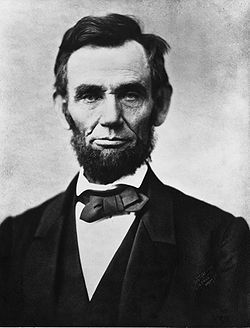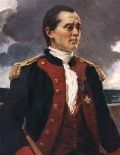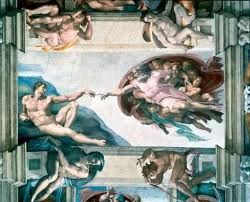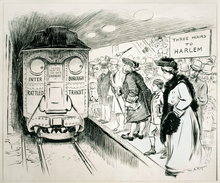This is your morning Open Thread. Pour your favorite beverage and review the past and comment on the future.
Find the past “On This Day in History” here.
October 31 is the 304th day of the year (305th in leap years) in the Gregorian calendar. There are 61 days remaining until the end of the year.
This day is internationally known as Halloween, also known as All Hallow’s Eve, Reformation Day, and Day of the Dead for the Philippines
On this day in 1926, Harry Houdini, the most celebrated magician and escape artist of the 20th century, dies of peritonitis in a Detroit hospital.
 Houdini was born Erik Weisz in Budapest in 1874, the son of a rabbi. At a young age, he immigrated with his family to Appleton, Wisconsin, and soon demonstrated a natural acrobatic ability and an extraordinary skill at picking locks.
Houdini was born Erik Weisz in Budapest in 1874, the son of a rabbi. At a young age, he immigrated with his family to Appleton, Wisconsin, and soon demonstrated a natural acrobatic ability and an extraordinary skill at picking locks.
He went on his first international tour in 1900 and performed all over Europe to great acclaim. In executing his escapes, he relied on strength, dexterity, and concentration-not trickery-and was a great showman.
In 1908, Houdini began performing more dangerous and dramatic escapes. In a favorite act, he was bound and then locked in an ironbound chest that was dropped into a water tank or thrown off a boat. In another, he was heavily bound and then suspended upside down in a glass-walled water tank. Other acts featured Houdini being hung from a skyscraper in a straitjacket, or bound and buried-without a coffin-under six feet of dirt.
In his later years, Houdini campaigned against mediums, mind readers, fakirs, and others who claimed supernatural talents but depended on tricks. At the same time, he was deeply interested in spiritualism and made a pact with his wife and friends that the first to die was to try and communicate with the world of reality from the spirit world.
Eyewitnesses to an incident in Montreal gave rise to speculation that Houdini’s death was caused by a McGill University student, J. Gordon Whitehead, who delivered multiple blows to Houdini’s abdomen to test Houdini’s claim that he was able to take any blow to the body above the waist without injury.
 The eyewitnesses, students named Jacques Price and Sam Smilovitz (sometimes called Jack Price and Sam Smiley), proferred accounts of the incident that generally corroborated one another. The following is Price’s description of events:
The eyewitnesses, students named Jacques Price and Sam Smilovitz (sometimes called Jack Price and Sam Smiley), proferred accounts of the incident that generally corroborated one another. The following is Price’s description of events:
Houdini was reclining on his couch after his performance, having an art student sketch him. When Whitehead came in and asked if it was true that Houdini could take any blow to the stomach, Houdini replied groggily in the affirmative. In this instance, he was hit three times before Houdini could tighten up his stomach muscles to avoid serious injury. Whitehead reportedly continued hitting Houdini several more times and Houdini acted as though he were in some pain.
Houdini reportedly stated that if he had time to prepare himself properly he would have been in a better position to take the blows. He had apparently been suffering from appendicitis for several days prior and yet refused medical treatment. His appendix would likely have burst on its own without the trauma. Although in serious pain, Houdini continued to travel without seeking medical attention.
When Houdini arrived at the Garrick Theater in Detroit, Michigan on October 24, 1926, for what would be his last performance, he had a fever of 104 F (40 C). Despite a diagnosis of acute appendicitis, Houdini took the stage. He was reported to have passed out during the show, but was revived and continued. Afterwards, he was hospitalized at Detroit’s Grace Hospital.
Houdini died of peritonitis from a ruptured appendix at 1:26 p.m. in Room 401 on October 31, aged 52.
After taking statements from Price and Smilovitz, Houdini’s insurance company concluded that the death was due to the dressing-room incident and paid double indemnity.
Houdini’s funeral was held on November 4, 1926 in New York, with more than 2,000 mourners in attendance. He was interred in the Machpelah Cemetery in Queens, New York, with the crest of the Society of American Magicians inscribed on his gravesite. To this day the Society holds a broken wand ceremony at the grave site in November. Houdini’s widow, Bess, died on February 11, 1943, aged 67, in Needles, California. She had expressed a wish to be buried next to him but instead was interred at the Gate of Heaven Cemetery in Westchester, New York, as her Catholic family refused to allow her to be buried in a Jewish cemetery out of concern for her soul.


 The British Egyptologist
The British Egyptologist 
 After departing Brest, Jones successfully executed raids on two forts in England’s Whitehaven Harbor, despite a disgruntled crew more interested in “gain than honor.” Jones then continued to his home territory of Kirkcudbright Bay, Scotland, where he intended to abduct the earl of Selkirk and then exchange him for American sailors held captive by Britain. Although he did not find the earl at home, Jones’ crew was able to steal all his silver, including his wife’s teapot, still containing her breakfast tea. From Scotland, Jones sailed across the Irish Sea to Carrickfergus, where the Ranger captured the HMS Drake after delivering fatal wounds to the British ship’s captain and lieutenant.
After departing Brest, Jones successfully executed raids on two forts in England’s Whitehaven Harbor, despite a disgruntled crew more interested in “gain than honor.” Jones then continued to his home territory of Kirkcudbright Bay, Scotland, where he intended to abduct the earl of Selkirk and then exchange him for American sailors held captive by Britain. Although he did not find the earl at home, Jones’ crew was able to steal all his silver, including his wife’s teapot, still containing her breakfast tea. From Scotland, Jones sailed across the Irish Sea to Carrickfergus, where the Ranger captured the HMS Drake after delivering fatal wounds to the British ship’s captain and lieutenant.
 Houdini was born Erik Weisz in Budapest in 1874, the son of a rabbi. At a young age, he immigrated with his family to Appleton, Wisconsin, and soon demonstrated a natural acrobatic ability and an extraordinary skill at picking locks.
Houdini was born Erik Weisz in Budapest in 1874, the son of a rabbi. At a young age, he immigrated with his family to Appleton, Wisconsin, and soon demonstrated a natural acrobatic ability and an extraordinary skill at picking locks. The eyewitnesses, students named Jacques Price and Sam Smilovitz (sometimes called Jack Price and Sam Smiley), proferred accounts of the incident that generally corroborated one another. The following is Price’s description of events:
The eyewitnesses, students named Jacques Price and Sam Smilovitz (sometimes called Jack Price and Sam Smiley), proferred accounts of the incident that generally corroborated one another. The following is Price’s description of events: While London boasts the world’s oldest underground train network (opened in 1863) and Boston built the first subway in the United States in 1897, the New York City subway soon became the largest American system. The first line, operated by the Interborough Rapid Transit Company (IRT), traveled 9.1 miles through 28 stations. Running from City Hall in lower Manhattan to Grand Central Terminal in midtown, and then heading west along 42nd Street to Times Square, the line finished by zipping north, all the way to 145th Street and Broadway in Harlem. On opening day, Mayor McClellan so enjoyed his stint as engineer that he stayed at the controls all the way from City Hall to 103rd Street.
While London boasts the world’s oldest underground train network (opened in 1863) and Boston built the first subway in the United States in 1897, the New York City subway soon became the largest American system. The first line, operated by the Interborough Rapid Transit Company (IRT), traveled 9.1 miles through 28 stations. Running from City Hall in lower Manhattan to Grand Central Terminal in midtown, and then heading west along 42nd Street to Times Square, the line finished by zipping north, all the way to 145th Street and Broadway in Harlem. On opening day, Mayor McClellan so enjoyed his stint as engineer that he stayed at the controls all the way from City Hall to 103rd Street.